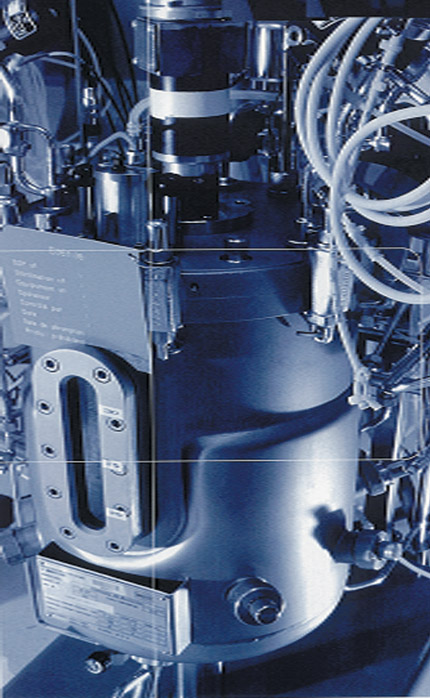Recombinant technology
With new approaches to technology, hormones with hight purity are now available for sub-fertile couples
By Sophia Yip
With a new approach to recombinant technology, childless couples regain hope. Hong Kong’s first biotech baby utilizing this new approach was born in late February.
The technology can help couples with sub-fertility, according to Dr. Milton Leung Ka Hong, director of the In-Vitro Fertilization Center at the Hong Kong Sanatorium and Hospital.
A couple is “sub-fertile” when they fail to conceive within 12 months of regular and unprotected sexual intercourse.
Different from sterility, a sub-fertile couple might be able to conceive naturally, though the chance is low.
In recombinant technology, two kinds of hormones, a follicle stimulating hormone (FSH) and a lutenizing hormone (LH), are extracted.
Dr. Leung explained that FSH and LH can stimulate follicles to mature.
“FSH stimulates egg production and the development of follicles.
“LH stimulates follicular development in women with severe LH deficiency,” explained Dr. Leung.
However, in the past, it was inevitable that the two hormones extracted with 100 percent purity would contain other substances like urine.
“Users may be infected by disease,” said Dr. Leung.
From the ’50s to the ’80s, drug companies tried to purify the product.
By the mid-1980s, they invented FSH with 95 percent purity.
However, it still contained urine.
“In 2000, a Swiss drug company, Serono, used new biotechnology to produce the drug.
“They separate FSH and LH from urine contaminants.
“By this treatment, the extracted hormone is purified.
“Hormones with higher purity and quality can lower the infection rate,” Dr. Leung explained.
According to Dr. Leung, the first step of this gene therapy is to extract genes from the hormone.
Then genes are implanted into the host cell’s DNA.
The host cell will then multiply. When the host cell multiplies rapidly, hormones are secreted.
All these processes take place in a bioreactor in which the cell is cultured under optimal conditions.
Afterwards, the extracted hormone is purified and colleted in a vial.
Finally, pure, scientifically produced hormones are injected into the patients.
However, Dr. Leung explained that this was not a new invention, but only a new approach to the traditional technology.
Prof. Susanna Lee Sau Tuen, an associate professor in the Department of Biochemistry at The Chinese University of Hong Kong, agreed.
“The first biotech baby was born in London in 1997,” she said.
Although the technology brings many advantages, it has side effects.
“Despite the purity and flexibility it brings, I’m not sure whether it is really better than the previous treatment.
“It will be proved in the long run,” said Dr. Leung.
In addition, Prof. Lee said that ovaries may be over-stimulated, in which case it may cause multiple pregnancy.
“Normally ovaries produce one egg per month. But under this situation, it will produce more than one egg.
“However, it is dangerous as the pregnant woman may die,” explained Prof. Lee.
Apart from recombinant technology, there are still other ways to help women with sub-fertility.
Before the introduction of recombinant technology, sub-fertile women could take medicine or choose in vitro fertilization.
“Woman can take medicine that contains hormones. When patients take it, it sends a message of lack of hormones to the body.
“This will then stimulate the secretion of hormones and the development of follicles.
“This method is cheaper and easier to control. But it is not as direct as using the recombinant technology,” said Dr. Leung.
Another method is to take in vitro fertilization.
“It is effective but painful,” said Prof. Lee.
This new approach in recombinant technology was introduced to Hong Kong in September 2001 and is now used in most of Hong Kong’s hospitals.
The Queen Mary Hospital, Prince of Wales Hospital, Kwong Wah Hospital, Hong Kong Sanatorium Hospital and Union Hospital have introduced this treatment.
Concerning the price of using the technology, Dr. Leung said that each dose of the drugs costs $500 and the number of doses taken depends on the patient. Its price is nearly double that of the urinary products.
Besides, Dr. Leung said that there are still problems that need to be solved. For example, the problem of over stimulation.
Yet, the new treatment has not received a furious response so far.
“Many of my patients immediately asked me about the biotech baby.
“But until now, few of them have tried this approach,” said Dr. Leung.

Recombinant technology takes place in a bioreacter. (Courtesy
of Hong Kong Sanatorium & Hospital)